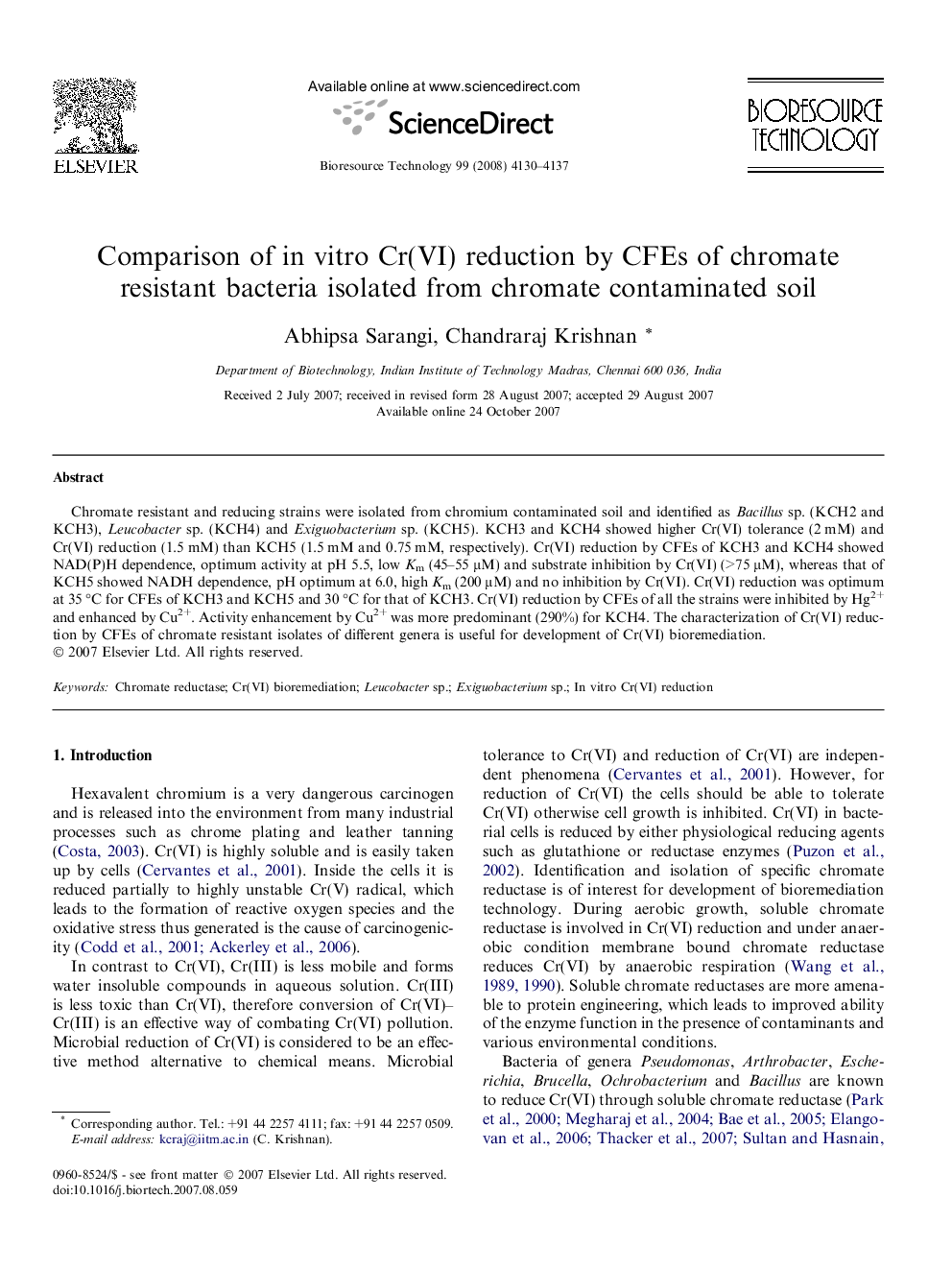| Article ID | Journal | Published Year | Pages | File Type |
|---|---|---|---|---|
| 684354 | Bioresource Technology | 2008 | 8 Pages |
Chromate resistant and reducing strains were isolated from chromium contaminated soil and identified as Bacillus sp. (KCH2 and KCH3), Leucobacter sp. (KCH4) and Exiguobacterium sp. (KCH5). KCH3 and KCH4 showed higher Cr(VI) tolerance (2 mM) and Cr(VI) reduction (1.5 mM) than KCH5 (1.5 mM and 0.75 mM, respectively). Cr(VI) reduction by CFEs of KCH3 and KCH4 showed NAD(P)H dependence, optimum activity at pH 5.5, low Km (45–55 μM) and substrate inhibition by Cr(VI) (>75 μM), whereas that of KCH5 showed NADH dependence, pH optimum at 6.0, high Km (200 μM) and no inhibition by Cr(VI). Cr(VI) reduction was optimum at 35 °C for CFEs of KCH3 and KCH5 and 30 °C for that of KCH3. Cr(VI) reduction by CFEs of all the strains were inhibited by Hg2+ and enhanced by Cu2+. Activity enhancement by Cu2+ was more predominant (290%) for KCH4. The characterization of Cr(VI) reduction by CFEs of chromate resistant isolates of different genera is useful for development of Cr(VI) bioremediation.
